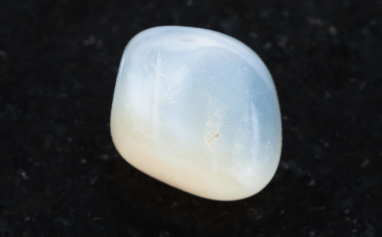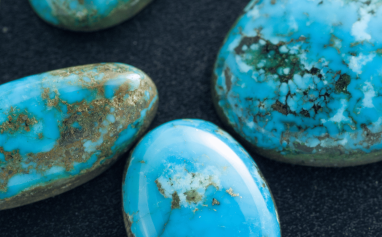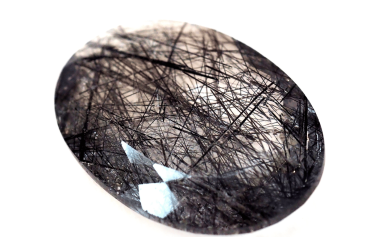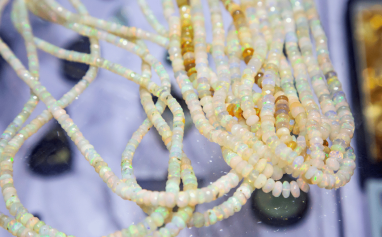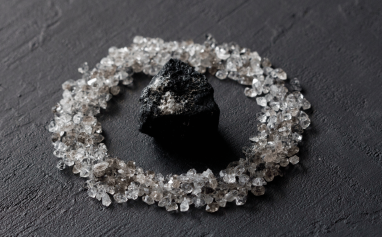
From dusky red to pale pink, from dark green to bright yellow, or Brilliant blues, dazzling black…… You will not be able to guess how many more colors of tourmaline are there in the world of gemstones. Yes! Tourmaline is the only gemstone that exhibits broad diversification in colors. Due to high or low-level variation of mineral composition tourmaline shows a wide variety of colors. Because of its wide range of colors, the tourmaline can heal spiritual, emotional, and physical problems through its enormous power.
Fact sheet of tourmaline:
- Tourmaline is the birthstone of the month of October.
- Tourmaline is a hard stone, as its hardness is 7.0-7.5 on the Mohs Hardness Scale.
- Paraiba tourmaline is a bright blue-colored stone, which has a high copper composition. This unique feature makes this gem rarer and more expensive than diamonds.
- All kinds of tourmaline exhibits pleochroism, which means when you view the stone from different angles, it shows different colors.
Use of tourmaline since ancient times:
There is no definite speculation as to from what decade the tourmaline has been used but, there is evidence of tourmaline usage in the late 1600 or early 1700. It was first discovered by Dutch traders on the west coast of Italy. The term tourmaline was derived from the Sinhalese word turmali, this term was used by Dutch merchants to refer to the multicolored pebbles found in gem gravels of Ceylon. People previously thought that these were emerald. In 1800 scientists discovered their unique mineral composition, unlike emeralds.
Ancient Egyptians believed that tourmaline stones were broken and fell from the rainbow when it is pushed up from the earth. People of Ancient Egypt strongly believe that this stone has the capability to remove defects in the nervous system, lymph glands, and blood disorders. They used Tourmaline to cure physical and emotional troubles.
Know about characteristic features of tourmaline:
As you know tourmaline exhibits a different range of colors, it may feel difficult to choose real tourmaline among other gemstones. Here are some points to differentiate tourmaline from others:
Properties:
Chemically tourmaline is a crystallized boron silicate material, having minerals such as aluminum, iron, magnesium, sodium, lithium, or potassium. Tourmaline is found in a variety of colors, due to the presence of more or less composition of minerals.
Tourmaline is divided into many categories and subdivided into many more families based on color. Here are some main types:
Schorl: 90% of all tourmaline stones belong to this category. These are usually black, in rare conditions tint of blue or brown may occur. The black color is because of the iron-rich composition.
Elbaite: This group of stones is seen in jewelry. Because of the substitution of small chemical groups or minerals with one another, it ranges in different colors.
This group includes rubellite(red to pink), indicolite(blue to green), verdilite(green), achroite(colorless).
Dravite: This category has rich sodium, and magnesium content, so these stones appear in yellowish-brown or blackish brown.
Liddicoatite: It is mostly identical to Elbaite, with minor changes i.e; substitution of calcium with sodium. Pink, red, green, blue, brown, and very rarely white liddicoatite are seen.
Uvite: Uvite tourmaline has calcium magnesium content in higher amounts. It has a wide range of colors such as brilliant green, reddish-brown, purple, white, grey, and black.
Cutting of tourmaline:
A good cut is required to bring out the brightness and the best color shade from the tourmaline. cutting into crisp facets brings out the best symmetrical shape of tourmaline. The skillful cutting of tourmaline unwraps good chromatic intensity and minimizes inclusions.
Clarity and shape:
Normally tourmalines encapsulate liquids that surround them, which in turn modify as inclusions. Under magnification, you can see that the stones are filled with liquid or gas bubbles. However, gemologists refer to green tourmaline as eye-clean, it is devoid of inclusions. Usually, red and pink tourmalines exhibit eye-visible inclusions, which can be minimized while cutting, and some can be neglected by giving more value to color saturation.
The round triangular cross-sectional shape is unique to tourmaline crystals. Apart from it, there are some other shapes like cushion shapes, pear, oval shapes, and square shapes depending on the type of cuts.
Places where tourmaline is found in plenty:
Tourmaline is mined all over the world. Almost all kinds of tourmaline species are found in Brazil, popularly in the states of Minas Gerais and Bahia. Apart from Brazil, they are found in Asia, Pakistan, Afghanistan, and Indonesia as well as in Sri Lanka and India. These stones are chiefly mined in Africa in certain areas like Tanzania, Nigeria, and Kenya.
Advantages of tourmaline:
Aid in stress full life:
If you are immersed in multi-tasking situations and unable to enjoy life, here is the best option to enjoy is to keep black tourmaline with you. It helps in balancing, keeping the mind relaxed, and maintaining a peaceful environment.
Acts as a protective shield and transmutative device:
Gemologists recommend wearing black tourmaline very often, as it protects from negativity and transmutes negative energy into positive energy.
Boosting up love and relationships:
Gemologists advise keeping pink tourmaline near to the heart or meditating with pink tourmaline as it is the best in the activation of the heart chakra and balancing the emotions. It helps you to improve positive emotions like love, cheerfulness and you can maintain a stable relationship with family and people at working place.
Enhancing your career:
Gemologists often recommend you wear green tourmaline as it enhances financial growth,
It helps to develop intellectual and creative abilities.
Aid in curing health issues:
Most gemologists suggest tourmaline in the healing process, as it acts as a stress reliever, promotes sharpness of mind, improves blood circulation, and strengthens the immune system.
Fetch for the authentic one:
If you are looking for the real tourmaline here are some ways to select the correct one:
Choose through prismatic crystal phenomena:
Tourmaline crystals show prismatic phenomena, which means it exhibits a uniform cross-section. If the stone shows uniformity in cross-section then it is the real one.
Check through the striations:
Tourmaline has thin grooved lines, which run lengthwise along the shaft of the gemstone. These lines are called striations. If the gemstone you are looking for, has striations, then it is an authentic one or else it is fake.
Checking through laboratory testing:
You can take the stone to a nearby laboratory or jeweler, ask him to perform a lab test.
Methods to clean and store the tourmaline:
You have to clean with warm and soapy water gently by rubbing it with a soft cotton cloth. If you are not wearing it, store it in a cool place, exposing it to heat causes alteration of color. You should wrap the stone in a soft cloth while storing it.
Conclusion:
If you are seeking career growth or looking for a good, stable relationship with people, or if you are having a stress-burst life here is the medicine for all your problems i.e.; keeping tourmaline with you.



